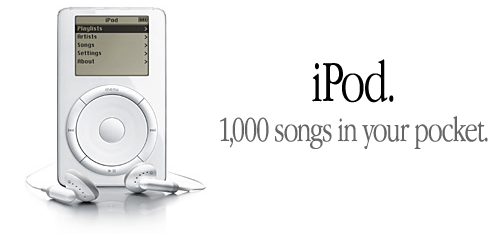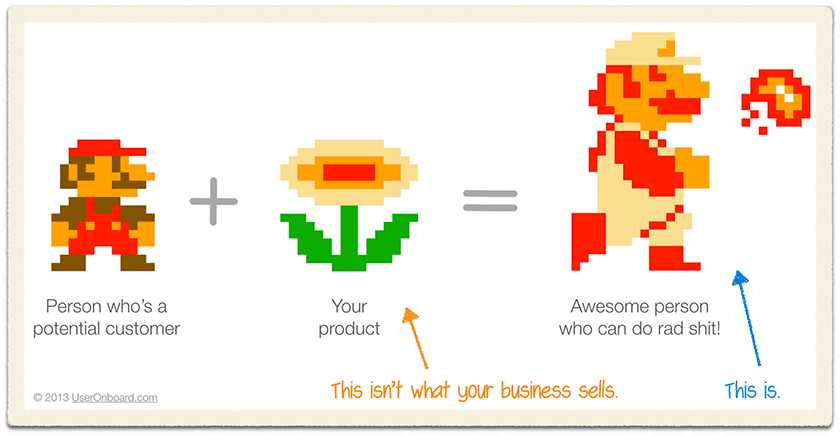People Don’t Buy Products, They Buy Better Versions of Themselves
There is the famous story about Steve Jobs when he invented the iPod and everyone in the news and the rest of the tech industry scratched their head a little. MP3 players had been around for quite a while, what was so different about the iPod?
Of course, people argued many things were different, but one of the key aspects was how Jobs marketed and presented it:
“1,000 songs in your pocket”
When everyone else was saying “1GB storage on your MP3 player”, telling people about the product, Apple went ahead and made you a better person, that has 1000 songs in your pocket.
Our friends over at User Onboarding wrote an incredible post and graphic, showcasing how this framework looks on a higher level:
Note: Try sharing the above image by right-clicking it and the choosing “add to Buffer” with the Buffer browser extension, it’s one of our most shared updates, ever
In particular, the image itself proved to be popular—understandably. It’s a great way to describe clever marketing that focuses on benefits rather than features.
I’ve heard people talk about using benefits instead of features in marketing, but I’ve always struggled to understand the difference. For this post, I explored this in a bit more detail and dug up some examples of companies who do this well.
Features vs. benefits – how to grasp the difference
Here’s how our friends at User Onboarding explained features vs. benefits:
People don’t buy products; they buy better versions of themselves. When you’re trying to win customers, are you listing the attributes of the flower or describing how awesome it is to throw fireballs?
It also included this Tweet from Jason Fried on the topic:
“Here’s what our product can do” and “Here’s what you can do with our product” sound similar, but they are completely different approaches.
— Jason Fried (@jasonfried) November 13, 2013When I read about this some more, I found some great blog posts that broke it down even further. One from the ideacrossing blog describes features as “what your product or service has or does” and benefits as “what the features mean and why they are important.” In fact, oftentimes products contain features, that are absolutely unused, which can be a big source of waste.
So, it seems like features are the “what” of your product or service, while benefits are the “why” behind it.
I also found a really neat, old marketing quote that’s often attributed to Theodore Levitt (he attributes it to Leo McGinneva in this paper), on why people buy quarter-inch drill bits:
They don’t want quarter-inch bits. They want quarter-inch holes.
So, the customer wants to make a quarter-inch hole for some reason. They buy a quarter-inch bit for their drill in order to achieve this. Marketing the drill bit based on its features (it fits into your drill) wouldn’t be as successful in this case as marketing it based on the benefits (you can create a quarter-inch hole).
So after all of this reading, I finally distilled the difference into a sentence that I think makes it easy to distinguish between features and benefits:
A feature is what your product does; a benefit is what the customer can do with your product.
But hey, enough the theory, let’s dig up some amazing examples from some of the best companies out there:
Some great examples of companies making you a better version of yourself
To get a better idea of how this works in practice, I thought it would be useful to take a look at some well-known companies who use benefits in their marketing strategies. Here are a few that I found:
Evernote: Remember Everything
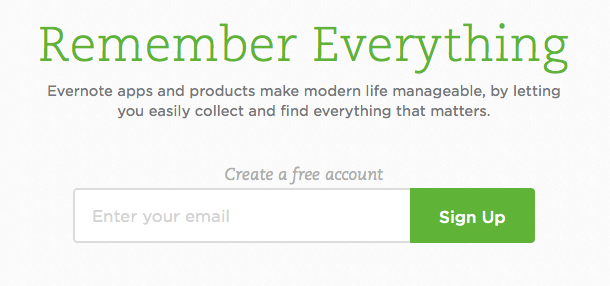
Evernote can’t remember everything for you. In fact, it can’t remember anything—it’s software. What it does is offer features to let you save and organize things. Remembering everything is what you can do with Evernote—the benefit!
Twitter: Start a conversation, explore your interests, and be in the know.
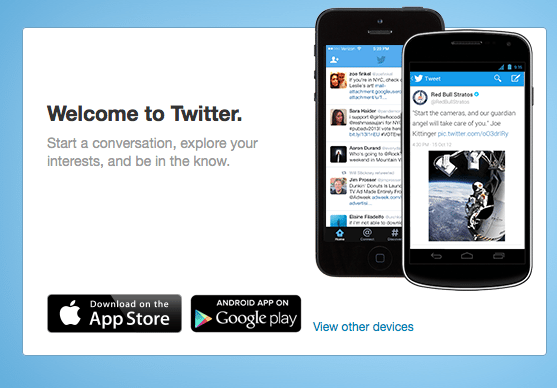
Twitter has used a few different benefits in their tag line on the homepage but they’re still focused on benefits. Each of these three things is something you can do with Twitter. Not a feature of the product. Of course, for saving time on Twitter with scheduling your Tweets and seeing analytics, I hope you’ll still find Buffer useful.
Nest Thermostat: Saving energy is a beautiful thing.
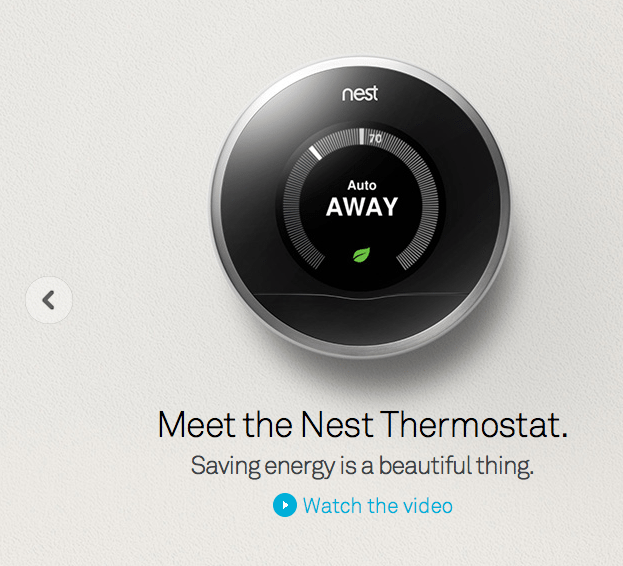
I love this one, because it’s so clever. In just six words, the Nest Thermostat tagline tells you what the biggest benefit is (you’ll save energy), and something about what makes the product unique (it’s well-designed; it’s “a beautiful thing”).
LinkedIn: Be great at what you do.
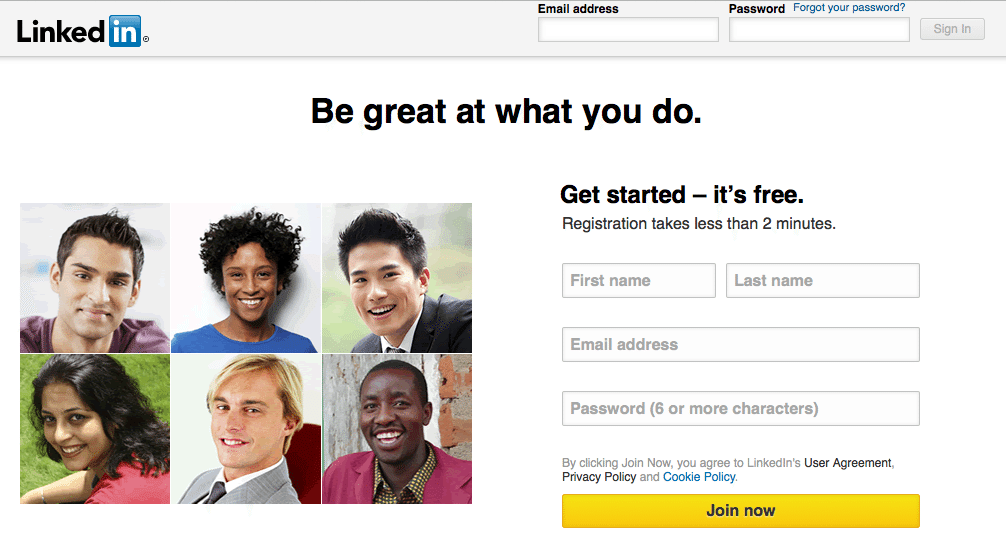
LinkedIn has gone even further by referencing the customer in their tagline. Saying “Be great at what you do” makes it clear that the idea is you’ll be great at what you do if you use LinkedIn. It’s very customer-focused, rather than pushing features of the product or company mottos front-and-center.
Github: Build software better, together.
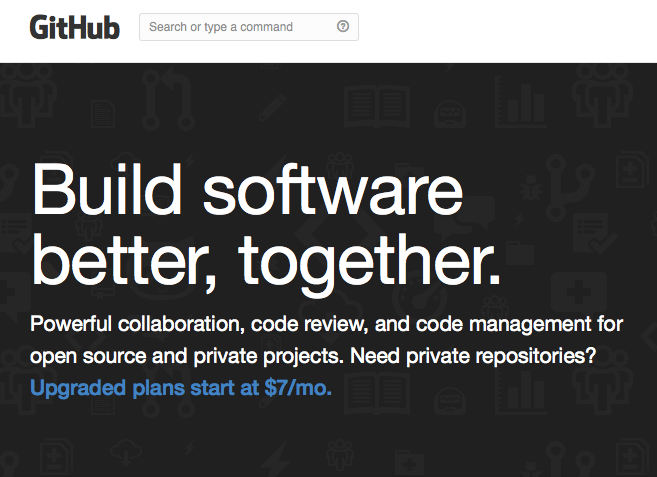
Another super simple, but clear tagline. Github has a really obvious benefit to sell to customers, and features don’t even play a part in the tagline.
I’m sure there are lots more companies doing this well. Do you have a great example? Share it in the comments below.
Oh and if you liked this post, you might also like 5 ways to get through writer’s block or content marketing fatigue and 6 Powerful Communication Tips From Some of the World’s Best Interviewers, which are right in the same direction of coming up with a better way to communicate with your customers.
What are some products that have amazed you in the past? I’d love your insights on what makes for a great experience with a product or service according to you:
P.S. Only last week we launched brand new Buffer analytics, with Google Analytics support, fan and follower growth options and more. Check it out and see if it can help your social media efforts.
Try Buffer for free
140,000+ small businesses like yours use Buffer to build their brand on social media every month
Get started nowRelated Articles

In this article, I’ll explain what SEO is for social media, why you should care about it, and how you can use it to your advantage.

I spoke to leading B2B content marketers (an in-house content director, agency owners, top freelancers, and thought leaders) to find out what they think B2B brands can do to create good content in 2024.

Black Friday and Cyber Monday marketing guidance to help you stand out from the crowd — complete with tried-and-tested examples.
